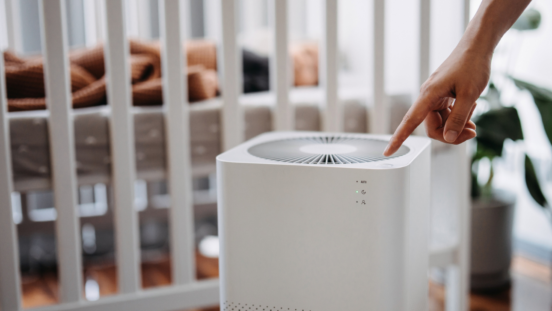A sight for sore eyes

How to treat conjunctivitis in young children
Boogies. When they come out the noses of our little charges, we wipe them away, shrug, and think, “Here comes another cold.” But move a couple of centimetres or two up and to the right or left, and the appearance of boogies will clear the breakfast table faster than you can say Chlorsig.
Conjunctivitis is rarely serious, but it is seriously annoying as it means your little crusty-eyed one has to stay home from school, preschool or daycare. And as Wondertime GP, Dr Gillian Deakin, points out, it’s highly contagious, so it’ll probably spread around your household.
“Children are very promiscuous! They’re always touching their eyes, they rub their noses, put their hands in their mouth and smear their faces with their hands, so it’s really easily spread,” says Dr Deakin. “That is why preschools and schools have to be so tough about not having kids with conjunctivitis attending.”
What is it?
Conjunctivitis involves the “itis” or inflammation of the membrane (or conjunctiva) that lines the eyelid and eyeball. The eye is equipped with tear ducts and mucus glands to keep it lubricated, but when this system gets overwhelmed, it can go into overdrive, secreting protective tears or mucus and causing the eye to become swollen and gooey.
An infection (either viral or bacterial) is commonly the cause, but allergens or other irritants (like household cleaners, grit, dust or smoke) also can set the eye on fire. The biggest concern with conjunctivitis is preventing it from spreading to others and hand washing is key here.
Dr Deakin says nearly all cases are caused by the bacteria, Golden Staph, otherwise called, Staphylococcus aureus and so can be treated with an antiobiotic drops or ointment.
Not–so-subtle signs
Parents typically notice eyes that are sticky or gummed shut upon awakening. Children may complain of discomfort, itchiness or sensitivity to light. There may also be fever or swollen lymph nodes near the ears. If it’s bacterial, antibiotic drops or ointment are prescribed, and these can work really quickly.
“It’s easy to know when you are free of it, as you’ll be able to see if the eyes are clear and are no longer yellowy, crusted, red and sore,” says Dr Deakin. This is when it’s time to send your little one back to school or preschool. If the pus is yellowy, it’s probably golden staph and treatable with an antibiotic. If the pus is white, it could be a cold virus causing the trouble.
Viral conjunctivitis should clear up on its own in three to four days, but you can make your child more comfortable by bathing their eyes with warm water and cotton wool a few times a day (start at the corner of the eye and gently wipe outwards). However, Dr Deakin does advise seeing a doctor about it.
“Very occasionally, it could be something more serious. Doctors are very thingy about eyes. Our eyes are very precious and, on the whole, really red, sore eyes probably need medical attention.”
Aeroplane
Getting drops and ointments into a wriggling child’s eye is an art form rather than a science, but here’s Dr Deakin’s suggested method for getting the drops in.
Make the whole process into a game, and have the child lie between your legs, with her head between your thighs and her arms pinned under your legs, so that she’s in an aeroplane action position. Then carefully, even if the eyes are closed, put a drop on the inside corner of her eye.
When she opens her eye the drops will fall in, and you could encourage the drops to stay by gently putting a clean or gloved finger on the inside corner of her eye.
Dr Deakin says the drops probably work quicker than the ointment, but if you are having enormous difficulty in getting them in, go for the ointment.




